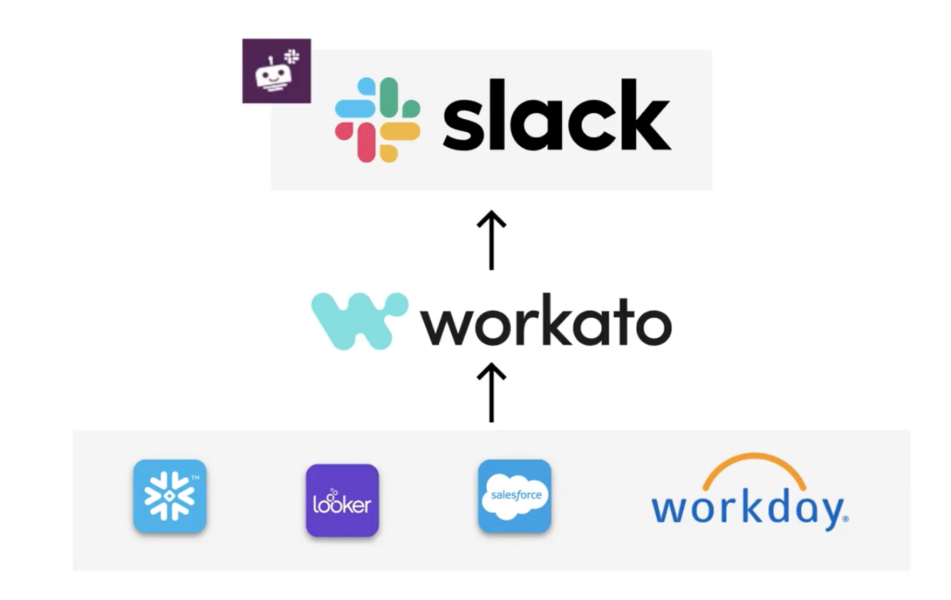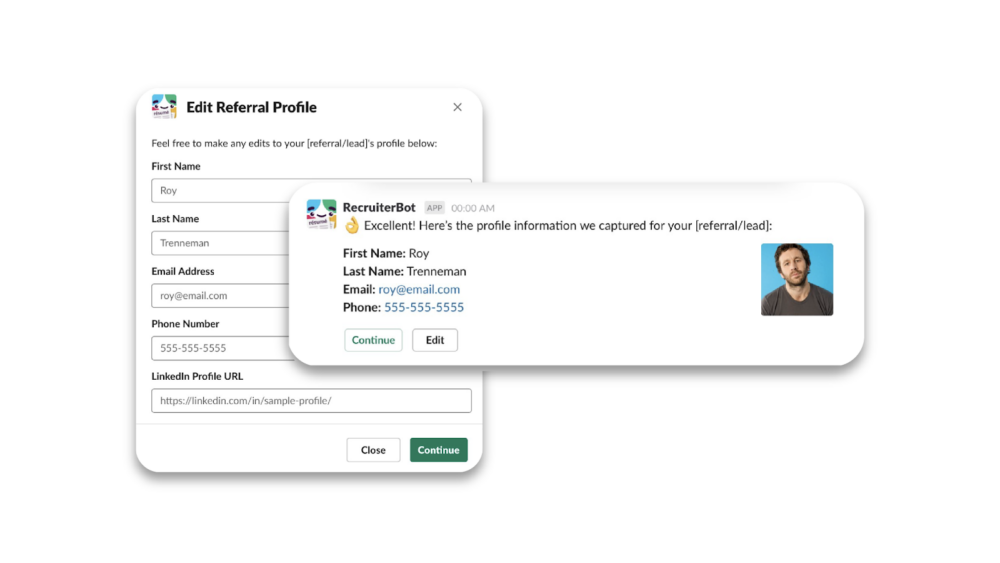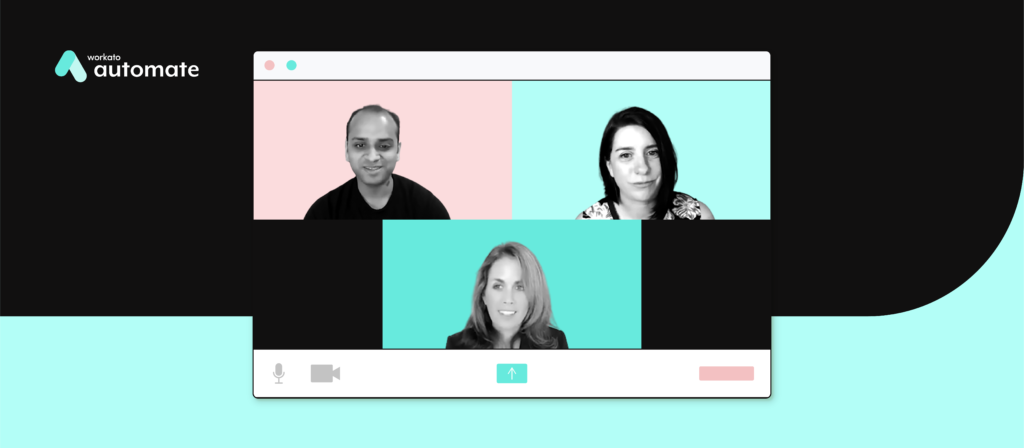The best ideas for tackling business challenges can come from anyone at an organization.
The Business Technology team at Slack took this idea to heart when they implemented their Slack-on-Slack program—which allows the organization at large to help the BT team ideate apps, bots, and workflows that could improve employee performance.
Through the initiative, the BT team has been able to identify and implement dozens of bots across lines of business that allow employees to work in their apps and automate their workflows without leaving Slack.
We’ll explain how these bots generally function and review one of them below. But if you want to learn more about the Slack-on-Slack program or the bots the organization uses, you can tune into the session, “The art of the possible with bots” from Automate, the #1 conference on automation.
The infrastructure behind the bots
During the session, Monica Wilkinson, the Lead Architect of Business Technology at Slack, offered a high-level overview on their bots.

She explained that the bots are powered by integrations (built in Workato) with apps that employees frequently use, like Workday, Salesforce, Looker, and of course, Slack. This allows the bots to orchestrate workflows across these apps and bring insights directly to users in Slack.
Wilkinson went on to explain that they use Heroku Enterprise as their platform as a service, allowing them to build apps and bots with more states, in addition to microservices.
After sharing this background information, Wilkinson’s colleagues presented various chatbots they’ve built. We’ll highlight one that’s geared towards streamlining recruiting.
Recruiter Bot
As the team at Slack grew at a high clip last year and had ambitious growth plans in the years ahead, they knew that their manual processes around referring and interviewing candidates weren’t sustainable. Furthermore, their team needed to overcome specific issues that also hampered scalability, such as duplicate referrals coming in.
Thanks to the Slack-on-Slack program, the team was able to identify a solution that addressed these challenges: Recruiter Bot.
Using Recruiter Bot, Slack employees can easily refer candidates without leaving the business communications platform. This includes filling out all the fields they’d normally be asked to complete in their applicant tracking system, Greenhouse.
Recruiters can also use the bot to access a weekly report in Slack that shows the number of referrals submitted across open positions.

Finally, Recruiter Bot ensures that interviewers submit their score cards as soon as their interviews end by sending them timely reminders in Slack.
So, what impact has Recruiter Bot had on the organization’s talent acquisition efforts? Vasu Jain, a Senior Software Engineer at Slack, explained:
“Since (Recruiter Bot was) launched last year, we’ve seen 100% of referrals flow through Recruiter Bot. We’ve also seen our average referral time decrease by 50%.”
When it comes to providing candidate feedback, the results are equally impressive. Jain said that the time to submit feedback decreased by 40%, and that more than 95% of scorecards get completed within 24 hours—allowing their team to move candidates forward in the interview cycle, faster.
To learn more about how the team at Slack set up this bot in Workato, and to learn about the chatbots their team uses for managing internal approvals, employee benefits, and more, you can watch the session’s recording.
